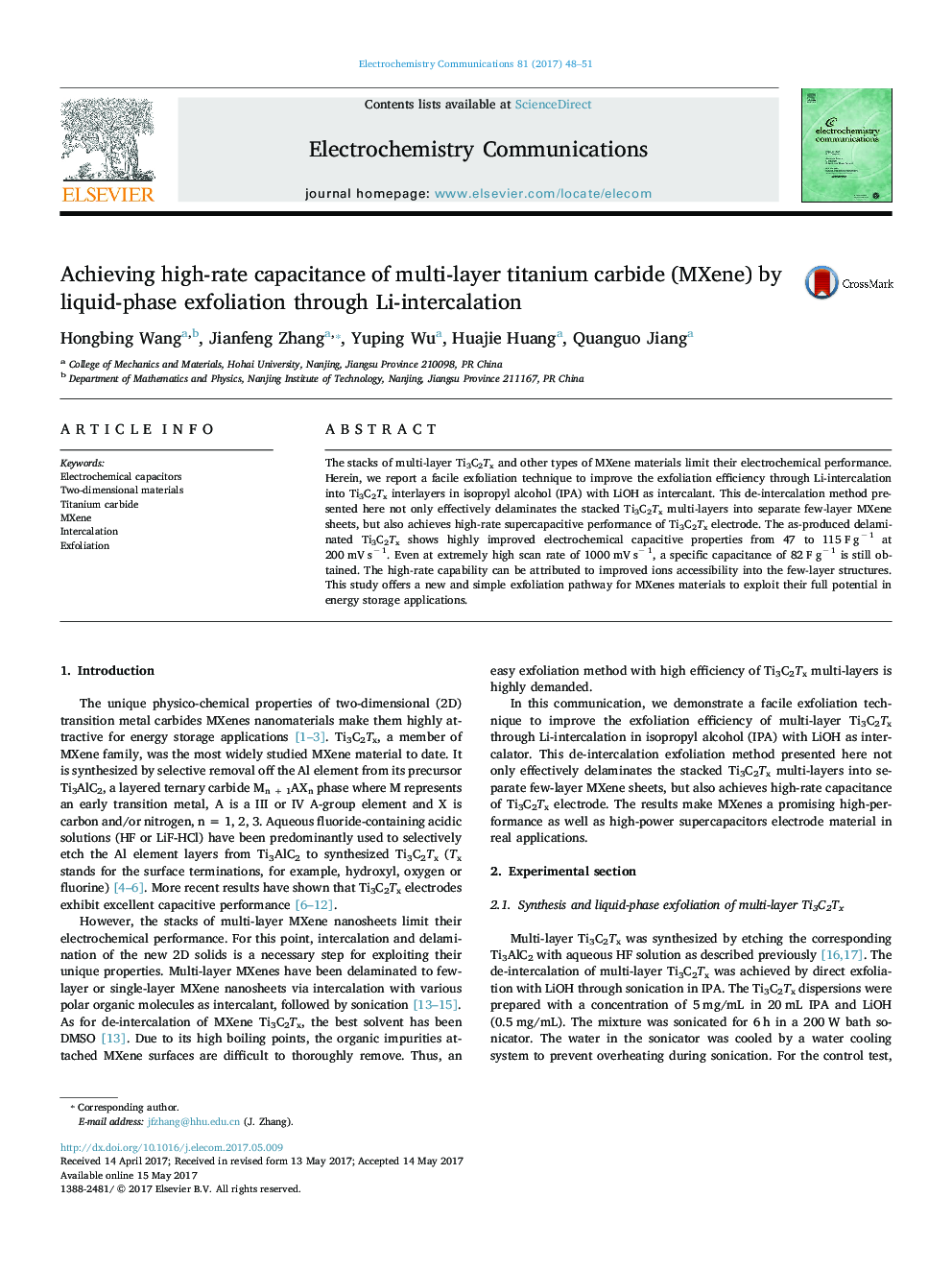| Article ID | Journal | Published Year | Pages | File Type |
|---|---|---|---|---|
| 6469647 | Electrochemistry Communications | 2017 | 4 Pages |
â¢The exfoliation efficiency has been improved through Li-intercalation between Ti3C2Tx layers in isopropyl alcohol.â¢SEM and AFM confirm the delamination of multi-layer Ti3C2Tx into few-layer nanosheets.â¢The delaminated Ti3C2Tx exhibits excellent capacitive performance and superior cycling stability even at high scan rates.
The stacks of multi-layer Ti3C2Tx and other types of MXene materials limit their electrochemical performance. Herein, we report a facile exfoliation technique to improve the exfoliation efficiency through Li-intercalation into Ti3C2Tx interlayers in isopropyl alcohol (IPA) with LiOH as intercalant. This de-intercalation method presented here not only effectively delaminates the stacked Ti3C2Tx multi-layers into separate few-layer MXene sheets, but also achieves high-rate supercapacitive performance of Ti3C2Tx electrode. The as-produced delaminated Ti3C2Tx shows highly improved electrochemical capacitive properties from 47 to 115 F gâ 1 at 200 mV sâ 1. Even at extremely high scan rate of 1000 mV sâ 1, a specific capacitance of 82 F gâ 1 is still obtained. The high-rate capability can be attributed to improved ions accessibility into the few-layer structures. This study offers a new and simple exfoliation pathway for MXenes materials to exploit their full potential in energy storage applications.
Graphical abstractDownload high-res image (195KB)Download full-size image
